On This Page
History
Older digital cameras are often not a wise buy, but the OlympusOlympus introduced its first camera in 1936, the Semi-Olympus I, fitted with the first Zuiko-branded lens. The first innovative camera series from Olympus was the Pen, launched in 1959. The half-frame format, allowing 72 pictures of 18 × 24 mm format on a standard 36-exposure roll of film, made Pen cameras compact and portable for their time. Pixel More Tough TG series may be different – and just what you need at a reasonable price. The robust waterproof construction means that second hand they are often in excellent condition. In this article, we provide some information on the OlympusOlympus introduced its first camera in 1936, the Semi-Olympus I, fitted with the first Zuiko-branded lens. The first innovative camera series from Olympus was the Pen, launched in 1959. The half-frame format, allowing 72 pictures of 18 × 24 mm format on a standard 36-exposure roll of film, made Pen cameras compact and portable for their time. Pixel More TG series from the TG-1 launched in 2012 to the TG-6. You will also find more in-depth information about the TG-6.
TG-1. Not Just for Extreme Environments
Introduced in 2012, the OlympusOlympus introduced its first camera in 1936, the Semi-Olympus I, fitted with the first Zuiko-branded lens. The first innovative camera series from Olympus was the Pen, launched in 1959. The half-frame format, allowing 72 pictures of 18 × 24 mm format on a standard 36-exposure roll of film, made Pen cameras compact and portable for their time. Pixel More TG-1 was shockproof to 2m, crushproof to 100kg, waterproof to 12m and freezeproof to -10°C, which means it can be used for mountaineering, snorkelling or even walking on glaciers. But it is not just for more extreme environments and makes a great travel or photo walk camera. The 12-million-pixel camera features an all-metal body construction with hard glass lens cover and feels robust enough to withstand years of hard use.
The 4.5-18mm (25-100mm equivalent) wide zoom lens has a maximum apertureThe aperture is basically a hole in the camera’s lens that lets light pass through it to the shutter and ultimately the film or censor. The aperture not only influences picture brightness but also regulates depth of focus. Most cameras are equipped with an iris aperture that can be freely adjusted or set according to pre-selected values. More of f/2-4.9, with the 4x optical zoom lens ideal for most situations. However, the camera also incorporates a digital zoom that increases the range to 8x (super-resolution zoom) or 16x, with the zoom indicator on the monitor displaying which magnification is in use.
The OlympusOlympus introduced its first camera in 1936, the Semi-Olympus I, fitted with the first Zuiko-branded lens. The first innovative camera series from Olympus was the Pen, launched in 1959. The half-frame format, allowing 72 pictures of 18 × 24 mm format on a standard 36-exposure roll of film, made Pen cameras compact and portable for their time. Pixel More Tough TG-1 is very easy to use. The rear dial sets the shooting mode, which includes program, iAuto, low light, supersport, scene mode, magic filter and two custom settings.
Unfortunately, the camera did not have a full manual setting – that came later. Other rear controls include a zoom rocker, movie record, playback, a navigation control with a central OK button and menu.
The Lithium-Ion battery is found on the base of the camera base with the SD card slot. A USB battery charger is also supplied, with the battery charged in-camera. The USB and HDMI ports are on the side of the camera, and both the base and side covers have double-locking to help maintain the watertight seal.
The TG-1 image quality is very good. Images are sharp and clean. The super-resolution zoom produces good results, whereas the 16x zoom is said to produce soft, mushy pixels.
HD movie capture is excellent for the age of the camera, with three shooting modes: 1080p, 720p and VGA. Each generates a smooth-playing video. The two macro settings produce excellent results and the super macro has LED illumination. The TG-1 provides sufficient information via a histogram, and 3in OLED screen give
The camera has no viewfinder and the screen does not tilt – probably difficult to achieve for a waterproof camera. Many will love the built-in GPS tracker. When the photos are uploaded to Lightroom, for example, you will be able to see the location of the shot although the GPS feature will use quite a lot of battery life. A built-in flash is available (no hot-shoe) is also available.
TG-2, Introduction of Aperture PriorityIn this mode, the user can adjust the aperture and the camera automatically selects the best shutter speed to match it. In most cameras, the Aperture Priority mode is usually denoted by the letter 'A'. Most film SLRs were made as Aperture Priority - e.g. Nikon and Olympus. More Mode
The 2013 OlympusOlympus introduced its first camera in 1936, the Semi-Olympus I, fitted with the first Zuiko-branded lens. The first innovative camera series from Olympus was the Pen, launched in 1959. The half-frame format, allowing 72 pictures of 18 × 24 mm format on a standard 36-exposure roll of film, made Pen cameras compact and portable for their time. Pixel More Tough TG-2 camera was a very minor upgrade to the TG-1. The main difference being an increased depth rating and the addition of an aperture priorityIn this mode, the user can adjust the aperture and the camera automatically selects the best shutter speed to match it. In most cameras, the Aperture Priority mode is usually denoted by the letter 'A'. Most film SLRs were made as Aperture Priority - e.g. Nikon and Olympus. More mode allowing the user to have better control over image capture. The newer model also had a lower retail cost than the TG-1.
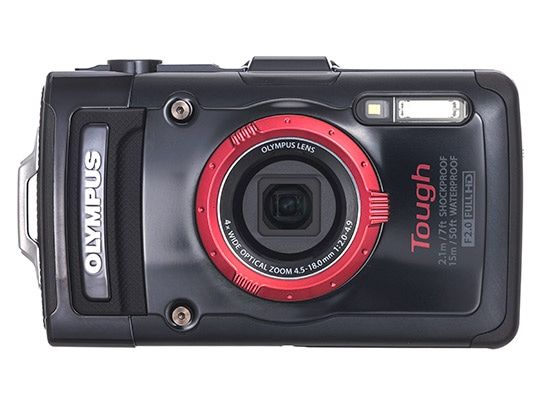
High-level specification.
- 12MP – 1/2.3″ BSI-CMOS Sensor
- SD and Eye-Fi memory card compatibility
- ISOInternational Organization for Standardization represents the film’s (or sensors) sensitivity to the light. The higher the number, the more information will be captured. 400 ISO film is more sensitive to light than 200 ISO film by 1 stop. 100 – 6400
- 25-100 mm F2.0-4.9 Zoom Lens
- Sensor-shift Image Stabilization
- 3″ Fixed Type Screen
- 5 fpsFPS stands for frames per second and determines the speed at which a camera can take photos/frames. It is especially important for sport and wildlife photographers, who may need to be able to shoot rapidly to make sure they capture perfectly-timed images. More FPS is considered an advantage and can be a differential factor in choosing a camera. More continuous shooting
- 1920 x 1080 video resolutionRefers to the number of pixels, both horizontally and vertically, used to either capture or display an image. The higher the resolution, the finer the image detail will be. More
- 240 fpsFPS stands for frames per second and determines the speed at which a camera can take photos/frames. It is especially important for sport and wildlife photographers, who may need to be able to shoot rapidly to make sure they capture perfectly-timed images. More FPS is considered an advantage and can be a differential factor in choosing a camera. More High-Speed Video
- Built-in GPS
- 230g. 111 x 67 x 29 mm
- JPEGJPEG is an acronym for Joint Photographic Experts Group and the standard format in which pictures are compressed. Due to this compression, JPEG files are smaller and carry less information. Sometimes also denoted as jpg or jpeg. More and QuickTime
- Battery life – 350 shots
- Weather-Sealed Body
TG-3, More Features
The TG3 raised the sensor to 16mb from 12mb and included the new features included – built-in wireless, manual exposureThe amount of light that reaches the film (or camera sensor). It determines how light or dark an image is. The exposure of an image is determined by the aperture, shutter speed, and film speed (ISO). During exposure, the sensors or chemicals on the film in analogue models, are subjected to the light outside the camera for a certain time. More, timelapse recording, focus bracketing, focus stacking and smartphone_remote control. The only disadvantage was that the TG3 was a little thicker than its predecessor, 31mm compared to 29mm.
High-level specification.
- Announcement Date: 2014-03-31
- 16MP – 1/2.3″ BSI-CMOS Sensor
- ISOInternational Organization for Standardization represents the film’s (or sensors) sensitivity to the light. The higher the number, the more information will be captured. 400 ISO film is more sensitive to light than 200 ISO film by 1 stop. 100 – 6400
- 25-100 mm F2.0-4.9 Zoom Lens
- Sensor-shift Image Stabilization
- 3″ Fixed Type Screen
- 5 fpsFPS stands for frames per second and determines the speed at which a camera can take photos/frames. It is especially important for sport and wildlife photographers, who may need to be able to shoot rapidly to make sure they capture perfectly-timed images. More FPS is considered an advantage and can be a differential factor in choosing a camera. More continuous shooting
- 1920 x 1080 video resolutionRefers to the number of pixels, both horizontally and vertically, used to either capture or display an image. The higher the resolution, the finer the image detail will be. More
- Built-in Wireless
- Built-in GPS
- 247g. 112 x 66 x 31 mm
- Weather-Sealed Body
TG-4, Now with RAW
The OlympusOlympus introduced its first camera in 1936, the Semi-Olympus I, fitted with the first Zuiko-branded lens. The first innovative camera series from Olympus was the Pen, launched in 1959. The half-frame format, allowing 72 pictures of 18 × 24 mm format on a standard 36-exposure roll of film, made Pen cameras compact and portable for their time. Pixel More TG 4 launched in April 2015 and introduced RAW, manual focusing, manual exposureThe amount of light that reaches the film (or camera sensor). It determines how light or dark an image is. The exposure of an image is determined by the aperture, shutter speed, and film speed (ISO). During exposure, the sensors or chemicals on the film in analogue models, are subjected to the light outside the camera for a certain time. More and improved battery life.
TG-5, Improved Picture Quality
OlympusOlympus introduced its first camera in 1936, the Semi-Olympus I, fitted with the first Zuiko-branded lens. The first innovative camera series from Olympus was the Pen, launched in 1959. The half-frame format, allowing 72 pictures of 18 × 24 mm format on a standard 36-exposure roll of film, made Pen cameras compact and portable for their time. Pixel More TG-5 TG was launched in May 2017 with several changes including:
12MP – 1/2.3″ BSI-CMOS Sensor
Higher ISOInternational Organization for Standardization represents the film’s (or sensors) sensitivity to the light. The higher the number, the more information will be captured. 400 ISO film is more sensitive to light than 200 ISO film by 1 stop. at 12,800
Bigger Sensor PixelPixel is the smallest unit of programmable colour represented on a digital display. Every photograph, in digital form, is made up of pixels. Higher resolutions mean that there are more pixels per inch (PPI), resulting in more pixel information and creating a high-quality, crisp image. Images with lower resolutions have fewer pixels, and if those few pixels are too large (usually when an image is stretched), they can become visible. The word “pixel” means a picture element. However, the number of pixels is not the determining factor in how good a camera is. More Area
Higher ResolutionRefers to the number of pixels, both horizontally and vertically, used to either capture or display an image. The higher the resolution, the finer the image detail will be. More Video
Support for UHS Memory Cards
At first glance, it may look like a downgrade OlympusOlympus introduced its first camera in 1936, the Semi-Olympus I, fitted with the first Zuiko-branded lens. The first innovative camera series from Olympus was the Pen, launched in 1959. The half-frame format, allowing 72 pictures of 18 × 24 mm format on a standard 36-exposure roll of film, made Pen cameras compact and portable for their time. Pixel More TG-4 and OlympusOlympus introduced its first camera in 1936, the Semi-Olympus I, fitted with the first Zuiko-branded lens. The first innovative camera series from Olympus was the Pen, launched in 1959. The half-frame format, allowing 72 pictures of 18 × 24 mm format on a standard 36-exposure roll of film, made Pen cameras compact and portable for their time. Pixel More TG-5 as the specification moves from 16MP to 12MP. But, since OlympusOlympus introduced its first camera in 1936, the Semi-Olympus I, fitted with the first Zuiko-branded lens. The first innovative camera series from Olympus was the Pen, launched in 1959. The half-frame format, allowing 72 pictures of 18 × 24 mm format on a standard 36-exposure roll of film, made Pen cameras compact and portable for their time. Pixel More TG-5 has 32% larger pixelPixel is the smallest unit of programmable colour represented on a digital display. Every photograph, in digital form, is made up of pixels. Higher resolutions mean that there are more pixels per inch (PPI), resulting in more pixel information and creating a high-quality, crisp image. Images with lower resolutions have fewer pixels, and if those few pixels are too large (usually when an image is stretched), they can become visible. The word “pixel” means a picture element. However, the number of pixels is not the determining factor in how good a camera is. More area (2.34µm2 vs 1.76µm2) compared to OlympusOlympus introduced its first camera in 1936, the Semi-Olympus I, fitted with the first Zuiko-branded lens. The first innovative camera series from Olympus was the Pen, launched in 1959. The half-frame format, allowing 72 pictures of 18 × 24 mm format on a standard 36-exposure roll of film, made Pen cameras compact and portable for their time. Pixel More TG-4, it has larger pixelPixel is the smallest unit of programmable colour represented on a digital display. Every photograph, in digital form, is made up of pixels. Higher resolutions mean that there are more pixels per inch (PPI), resulting in more pixel information and creating a high-quality, crisp image. Images with lower resolutions have fewer pixels, and if those few pixels are too large (usually when an image is stretched), they can become visible. The word “pixel” means a picture element. However, the number of pixels is not the determining factor in how good a camera is. More area to collect light hence potential to have less noise in low light / high ISOInternational Organization for Standardization represents the film’s (or sensors) sensitivity to the light. The higher the number, the more information will be captured. 400 ISO film is more sensitive to light than 200 ISO film by 1 stop. images
TG-6, Further Upgrades Including 4K Super Macro
Olympus TG-6 launched in May 2019 with an improved LCD Screen ResolutionRefers to the number of pixels, both horizontally and vertically, used to either capture or display an image. The higher the resolution, the finer the image detail will be. More 1.040k dots vs 460k dots and 4K super macro.
High-level specification.
- 12MP – 1/2.3″ BSI-CMOS Sensor
- ISOInternational Organization for Standardization represents the film’s (or sensors) sensitivity to the light. The higher the number, the more information will be captured. 400 ISO film is more sensitive to light than 200 ISO film by 1 stop. 100 – 12800
- 25-100 mm F2.0-4.9 Zoom Lens
- Sensor-shift Image Stabilization
- 3″ Fixed Type Screen
- 20.0 fpsFPS stands for frames per second and determines the speed at which a camera can take photos/frames. It is especially important for sport and wildlife photographers, who may need to be able to shoot rapidly to make sure they capture perfectly-timed images. More FPS is considered an advantage and can be a differential factor in choosing a camera. More continuous shooting
- 3840 x 2160 video resolutionRefers to the number of pixels, both horizontally and vertically, used to either capture or display an image. The higher the resolution, the finer the image detail will be. More
- Built-in Wireless
- Built-in GPS
- 253g. 113 x 66 x 32 mm
- Weather-Sealed Body
The Olympus TG-6 has what OlympusOlympus introduced its first camera in 1936, the Semi-Olympus I, fitted with the first Zuiko-branded lens. The first innovative camera series from Olympus was the Pen, launched in 1959. The half-frame format, allowing 72 pictures of 18 × 24 mm format on a standard 36-exposure roll of film, made Pen cameras compact and portable for their time. Pixel More calls a ‘variable macro system', which allows access to the new Super Macro AutofocusAutofocus (AF) is an optical system that uses a sensor, a control system and a motor to focus on an automatically or manually selected point or area. The process of autofocusing generally works as follows: • An autofocus processor (AFP) makes a small change in the focusing distance.
• AFP reads the AF sensor to assess whether and by how much focus has improved.
• Using the information from (2), the AFP sets the lens to a new focusing distance.
Autofocus systems can be found on film and digital cameras. More and Manual Focus modes directly from the Quick Menu in Aperture PriorityIn this mode, the user can adjust the aperture and the camera automatically selects the best shutter speed to match it. In most cameras, the Aperture Priority mode is usually denoted by the letter 'A'. Most film SLRs were made as Aperture Priority - e.g. Nikon and Olympus. More, Program Auto, or Movie Mode. Once focus is set to Super Macro, and as long as you zoom in to at least 1.2x, the camera can focus up to an astonishing 1cm in front of the lens. This makes Aperture PriorityIn this mode, the user can adjust the aperture and the camera automatically selects the best shutter speed to match it. In most cameras, the Aperture Priority mode is usually denoted by the letter 'A'. Most film SLRs were made as Aperture Priority - e.g. Nikon and Olympus. More mode equivalent to Microscope Mode in terms of focus ability, but with the added benefit of having a selectable apertureThe aperture is basically a hole in the camera’s lens that lets light pass through it to the shutter and ultimately the film or censor. The aperture not only influences picture brightness but also regulates depth of focus. Most cameras are equipped with an iris aperture that can be freely adjusted or set according to pre-selected values. More value as well.
The Olympus TG-6 still has Microscope Mode, which has been the marquee feature on this camera line for multiple generations. There are multiple options available in microscope mode such as focus stacking and HDR, but none of those really apply to underwater photography. For most underwater shooting situation there is no reason to switch over to Microscope Mode.
Previously, Microscope Mode did not allow one to select the apertureThe aperture is basically a hole in the camera’s lens that lets light pass through it to the shutter and ultimately the film or censor. The aperture not only influences picture brightness but also regulates depth of focus. Most cameras are equipped with an iris aperture that can be freely adjusted or set according to pre-selected values. More, making it the same as Program Auto mode but with a super close focus ability. Typically the camera would pick a wide-open apertureThe aperture is basically a hole in the camera’s lens that lets light pass through it to the shutter and ultimately the film or censor. The aperture not only influences picture brightness but also regulates depth of focus. Most cameras are equipped with an iris aperture that can be freely adjusted or set according to pre-selected values. More like f4.9, but now we can stop our apertureThe aperture is basically a hole in the camera’s lens that lets light pass through it to the shutter and ultimately the film or censor. The aperture not only influences picture brightness but also regulates depth of focus. Most cameras are equipped with an iris aperture that can be freely adjusted or set according to pre-selected values. More down to f18 for more depth of field, and darker backgrounds.
OlympusOlympus introduced its first camera in 1936, the Semi-Olympus I, fitted with the first Zuiko-branded lens. The first innovative camera series from Olympus was the Pen, launched in 1959. The half-frame format, allowing 72 pictures of 18 × 24 mm format on a standard 36-exposure roll of film, made Pen cameras compact and portable for their time. Pixel More also changed the movie options that are available in the quick menu. Previously with the OlympusOlympus introduced its first camera in 1936, the Semi-Olympus I, fitted with the first Zuiko-branded lens. The first innovative camera series from Olympus was the Pen, launched in 1959. The half-frame format, allowing 72 pictures of 18 × 24 mm format on a standard 36-exposure roll of film, made Pen cameras compact and portable for their time. Pixel More TG-5 to shoot 4K or high speed 1080 video, it was required to be in Movie Mode. Now, 4K and high speed 1080 can be used directly from the Quick Menu, allowing the shooting of these video specs in Program Auto and Aperture PriorityIn this mode, the user can adjust the aperture and the camera automatically selects the best shutter speed to match it. In most cameras, the Aperture Priority mode is usually denoted by the letter 'A'. Most film SLRs were made as Aperture Priority - e.g. Nikon and Olympus. More mode.
Another benefit is executing a custom white balanceThe camera's ability to correct colour cast or tint under different lighting conditions including daylight, indoor, fluorescent lighting, and electronic flash. Also known as "WB," many cameras offer an Auto WB mode that is usually quite accurate. White balance can also be adjusted in the post-processing of digital images in software such as Lightroom More. A custom white balanceThe camera's ability to correct colour cast or tint under different lighting conditions including daylight, indoor, fluorescent lighting, and electronic flash. Also known as "WB," many cameras offer an Auto WB mode that is usually quite accurate. White balance can also be adjusted in the post-processing of digital images in software such as Lightroom More cannot be performed in Movie Mode but can be executed when in one of the photo modes such as Program Auto or Aperture PriorityIn this mode, the user can adjust the aperture and the camera automatically selects the best shutter speed to match it. In most cameras, the Aperture Priority mode is usually denoted by the letter 'A'. Most film SLRs were made as Aperture Priority - e.g. Nikon and Olympus. More. Previously on the OlympusOlympus introduced its first camera in 1936, the Semi-Olympus I, fitted with the first Zuiko-branded lens. The first innovative camera series from Olympus was the Pen, launched in 1959. The half-frame format, allowing 72 pictures of 18 × 24 mm format on a standard 36-exposure roll of film, made Pen cameras compact and portable for their time. Pixel More TG-5 to perform a custom white balanceThe camera's ability to correct colour cast or tint under different lighting conditions including daylight, indoor, fluorescent lighting, and electronic flash. Also known as "WB," many cameras offer an Auto WB mode that is usually quite accurate. White balance can also be adjusted in the post-processing of digital images in software such as Lightroom More when shooting 4K you had to switch to a photo mode, execute the white balanceThe camera's ability to correct colour cast or tint under different lighting conditions including daylight, indoor, fluorescent lighting, and electronic flash. Also known as "WB," many cameras offer an Auto WB mode that is usually quite accurate. White balance can also be adjusted in the post-processing of digital images in software such as Lightroom More, then switch back to movie mode. It is a time consuming and tedious process that is simplified by being able to shoot video by directly pressing the record button in one of the photo modes.
Being able to select Program Auto or Aperture PriorityIn this mode, the user can adjust the aperture and the camera automatically selects the best shutter speed to match it. In most cameras, the Aperture Priority mode is usually denoted by the letter 'A'. Most film SLRs were made as Aperture Priority - e.g. Nikon and Olympus. More for shooting 4K video, and the ability to use Super Macro autofocusAutofocus (AF) is an optical system that uses a sensor, a control system and a motor to focus on an automatically or manually selected point or area. The process of autofocusing generally works as follows: • An autofocus processor (AFP) makes a small change in the focusing distance.
• AFP reads the AF sensor to assess whether and by how much focus has improved.
• Using the information from (2), the AFP sets the lens to a new focusing distance.
Autofocus systems can be found on film and digital cameras. More from the quick menu are huge improvements. This is the first TG camera that can shoot 4K super macro, which is a breakthrough for a camera this size.
The ability to use Aperture PriorityIn this mode, the user can adjust the aperture and the camera automatically selects the best shutter speed to match it. In most cameras, the Aperture Priority mode is usually denoted by the letter 'A'. Most film SLRs were made as Aperture Priority - e.g. Nikon and Olympus. More and shoot video has benefits for both wide-angle and macro shooting. For wide-angle, when using a conversion lens like the Backscatter M52 Wide Angle Lens, sharp corners can be assured by being able to assign an apertureThe aperture is basically a hole in the camera’s lens that lets light pass through it to the shutter and ultimately the film or censor. The aperture not only influences picture brightness but also regulates depth of focus. Most cameras are equipped with an iris aperture that can be freely adjusted or set according to pre-selected values. More of f8 or higher. For macro the apertureThe aperture is basically a hole in the camera’s lens that lets light pass through it to the shutter and ultimately the film or censor. The aperture not only influences picture brightness but also regulates depth of focus. Most cameras are equipped with an iris aperture that can be freely adjusted or set according to pre-selected values. More can be set to f18, giving more depth of field and making it easier to eliminate ambient light to get nice clean dark backgrounds for macro video.
The Olympus TG-6 has a new ability to set a Minimum Shutter SpeedThe time a camera sensor or film is exposed to light when taking a photo. More limit, which can be set as fast as 1/500 of a second. The only catch is that to take advantage of this; the camera must be in Auto-ISO mode. Auto ISOInternational Organization for Standardization represents the film’s (or sensors) sensitivity to the light. The higher the number, the more information will be captured. 400 ISO film is more sensitive to light than 200 ISO film by 1 stop. preferences can adjusted that will prevent the camera from choosing too high of an ISOInternational Organization for Standardization represents the film’s (or sensors) sensitivity to the light. The higher the number, the more information will be captured. 400 ISO film is more sensitive to light than 200 ISO film by 1 stop. setting. The higher limit can be set as low as 400 and the lower limit can be set to a default of 100.
While it is not direct control over shutter speedThe time a camera sensor or film is exposed to light when taking a photo. More, the Olympus TG-6 can better freeze motion and create backgrounds that are several stops darker than the capabilities of the TG-5.
The Olympus TG-6 has three new white balanceThe camera's ability to correct colour cast or tint under different lighting conditions including daylight, indoor, fluorescent lighting, and electronic flash. Also known as "WB," many cameras offer an Auto WB mode that is usually quite accurate. White balance can also be adjusted in the post-processing of digital images in software such as Lightroom More presets for underwater shooting that are depth-specific. There is a Shallow setting for 10-feet or 3-meters, Mid Range for 10-50 feet or 3-15 meters, and Deep for anything below 50-feet or 15-meters.
The Olympus TG-6 now has five underwater preset shooting modes – Snapshot, Wide, Macro, Microscope, and HDR – but only the Underwater Microscope Mode is new compared to the OlympusOlympus introduced its first camera in 1936, the Semi-Olympus I, fitted with the first Zuiko-branded lens. The first innovative camera series from Olympus was the Pen, launched in 1959. The half-frame format, allowing 72 pictures of 18 × 24 mm format on a standard 36-exposure roll of film, made Pen cameras compact and portable for their time. Pixel More TG-5.
The Olympus TG-6 has two custom assignable modes (C1 & C2) on the mode dial, just like the OlympusOlympus introduced its first camera in 1936, the Semi-Olympus I, fitted with the first Zuiko-branded lens. The first innovative camera series from Olympus was the Pen, launched in 1959. The half-frame format, allowing 72 pictures of 18 × 24 mm format on a standard 36-exposure roll of film, made Pen cameras compact and portable for their time. Pixel More TG-5. These are an excellent solution for quick jump-settings to spend less time in the menu underwater.
TG Series Conclusion
The OlympusOlympus introduced its first camera in 1936, the Semi-Olympus I, fitted with the first Zuiko-branded lens. The first innovative camera series from Olympus was the Pen, launched in 1959. The half-frame format, allowing 72 pictures of 18 × 24 mm format on a standard 36-exposure roll of film, made Pen cameras compact and portable for their time. Pixel More TG series or to give the camera its full name OlympusOlympus introduced its first camera in 1936, the Semi-Olympus I, fitted with the first Zuiko-branded lens. The first innovative camera series from Olympus was the Pen, launched in 1959. The half-frame format, allowing 72 pictures of 18 × 24 mm format on a standard 36-exposure roll of film, made Pen cameras compact and portable for their time. Pixel More Tough TG- iHS is a great robust high specification camera. While the TG-6 naturally has the best overall specification, earlier models still produce excellent results and may well meet the user's needs at a lower purchase price.
The TG-1 is probably a good camera for those that want something relatively cheap to carry in a pocket or bag. I think that they may not be too easy to find though. The TG-2 is a lot easier to find and is a better camera, so probably this will be the entry camera for many. The TG-4 provides wireless access and can link to OI.Share which allows you to upload images to your mobile phone and use remote shooting.
The TG-4, TG-5 and TG-6 all have RAW support which may appeal to those that want to sell their images via Microstock, etc.
(RAW is a file format that captures all image data recorded by the sensor when you take a photograph, unlike a JPEGJPEG is an acronym for Joint Photographic Experts Group and the standard format in which pictures are compressed. Due to this compression, JPEG files are smaller and carry less information. Sometimes also denoted as jpg or jpeg. More image where information is compressed and lost. With RAW you’re able to produce higher quality images, as well as correct problem images that would be unrecoverable if shot in the JPEG format. There is plenty of software to help too.)
Where to find an Olympus TG
Olympus TG Series on Amazon.co.uk
Olympus TG Series on eBay.co.uk
Post References and Attribution
Please also take a look at My New Camera the Olympus TG-6
Post Links
RW Jemmett Photography Business Directory – Photography & Video Equipment
Use the Right Software, Create the Right Image…
Instagram #olympustg
Here are some images that I have taken with my TG-6 and for sale on Etsy

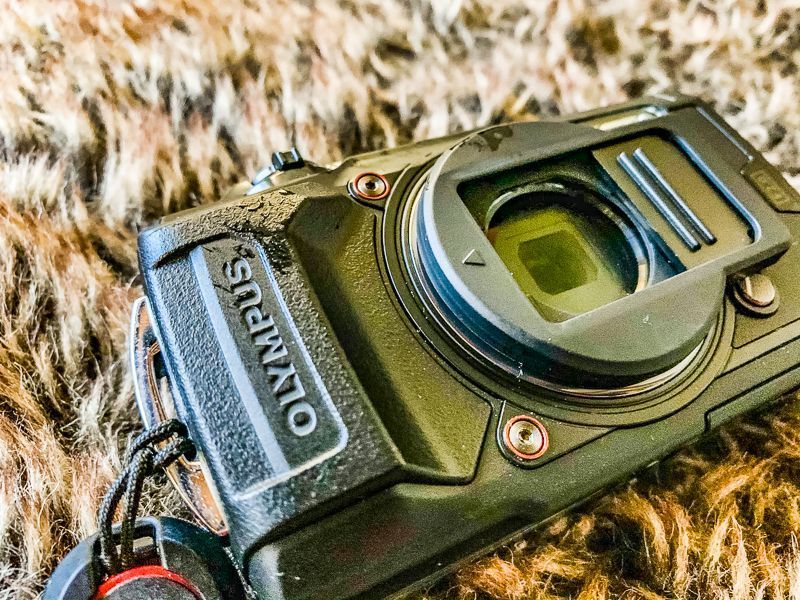




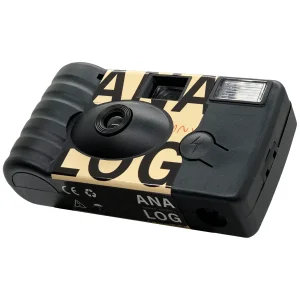






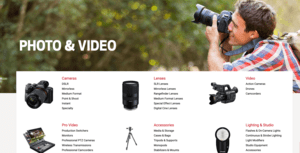






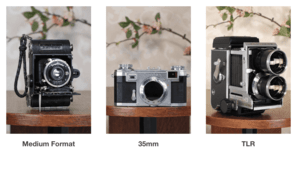








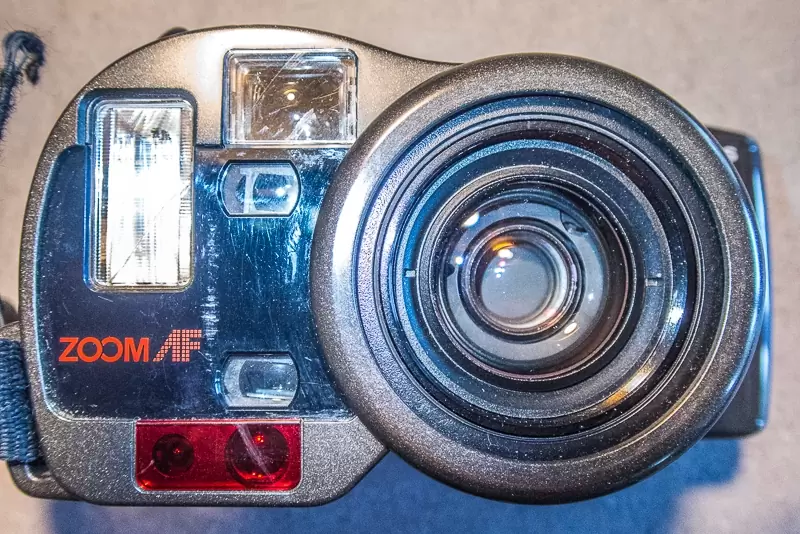
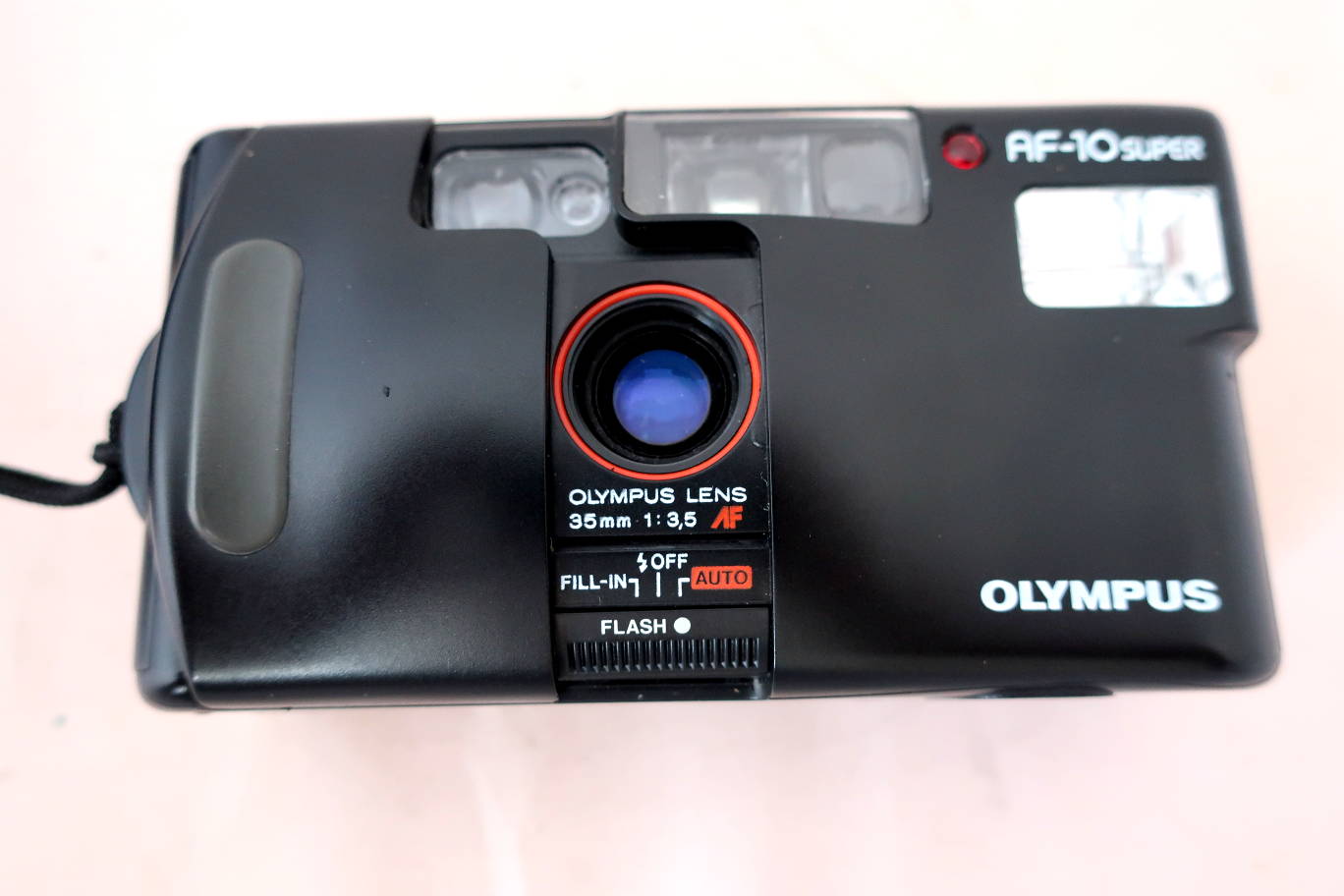
One thought on “Olympus TG Comparison of Models – Are Older Versions Still a Good Buy?”